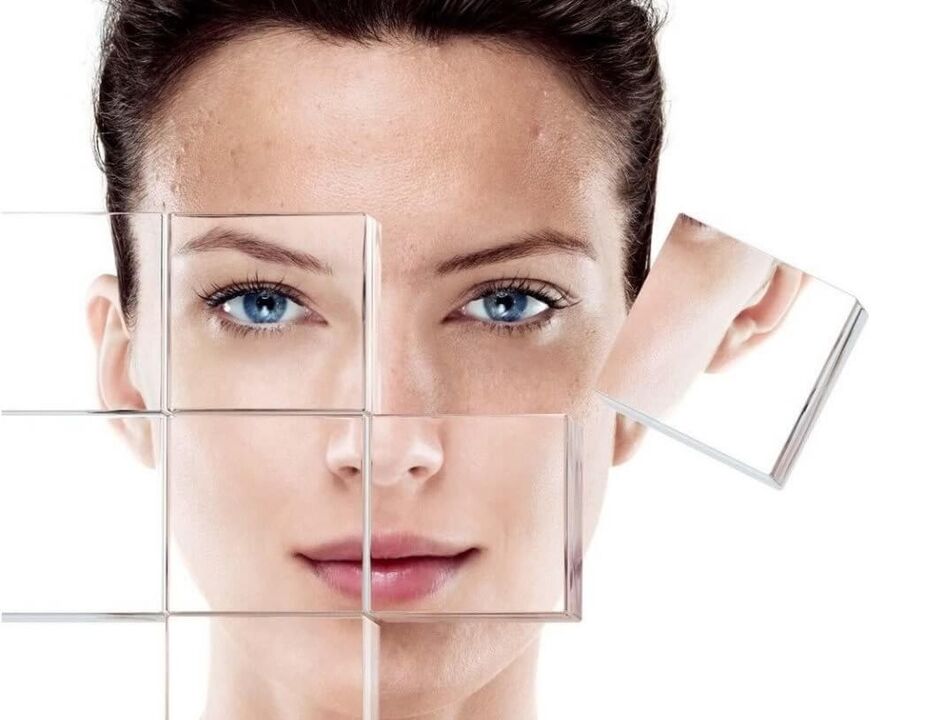
Scientists have shown that our skin begins to age from the age of 25, but most women (and in recent years, many men) strive to maintain a blooming appearance for as long as possible. Therefore, in plastic surgery, people saw an opportunity to preserve their youth and were happy to trust the professionalism of doctors. But science does not stand still, and today technologies that use a laser to restore skin are taking the lead. After exposure to rays of a certain length, divided into several streams of light, the skin begins to get rid of particles unable to regenerate, and young healthy cells rapidly divide, replacing the dead layer. This ability to restore the skin's natural processes makes laser resurfacing an alternative to surgery.
Operating principle
It has long been known that aging is directly related to a slowdown in metabolic processes. Those cells that have already exhausted their resource die much more slowly, and new ones are in no hurry to replace them. In addition, the synthesis of collagen and elastin is interrupted. Thus, the skin loses its elasticity and shape, wrinkles form. With the help of modern technology, doctors have learned to slow down and even reverse these phenomena. The fact is that with local exposure to a laser beam, the skin tissues experience a kind of thermal shock. Those of them that hit directly die, in their place there are peculiar craters of coagulated protein. The surrounding tissues, trying to heal the damage as soon as possible, begin to grow rapidly, forming a new layer. As a result, the patient gets smooth and toned skin for a long time. This procedure is called fractional (zonal) laser resurfacing.
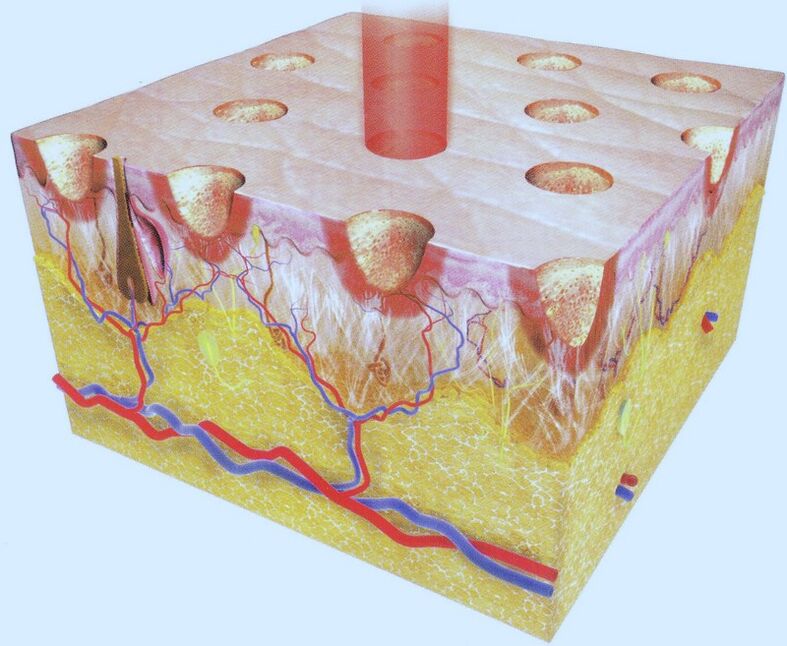
Varieties of fractional laser resurfacing.
Fractional laser resurfacing includes many techniques in which, in addition to exposing the skin with a laser of different wavelengths, additional equipment and cosmetics are used.
ablative
Ablative exposure involves working with the superficial layers of the skin without damaging them deeply. Most often it is used to remove fine wrinkles, remove surface defects and the first signs of aging. This technique is most effective for those who are not yet 40 years old.During the procedure, the laser beam burns microsections in the stratum corneum.When healed, the skin is leveled, tightened, the effect is noticeable already 1-2 days after the procedure, but to maintain the result, it must be repeated periodically.
laser peeling
A more serious intervention is laser peeling. During this procedure, the upper layers of the skin are burned. This wording sounds scary, but it is quite safe and, thanks to local anesthesia, it is an almost painless procedure, for which cosmetology uses two types of devices: erbium and CO.twolasersDepending on the required intervention, the equipment adjusts to a certain length of radiation, which allows not to damage the deeper layers of the tissues.As a result, after restoration, the skin becomes more toned and youthful, and the ability to adjust the operating mode of laser devices allows you to correct the skin in the neckline area and the area around the eyes and lips. .Some disadvantages of laser peeling is a long recovery period (7-10 days).
Most often in salons and clinics CO is usedtwo- a laser that, using a charge of short beams or continuous beams, burns the upper layer of the skin. The danger of this device is that if you do not calculate the depth of penetration, then serious damage to the skin occurs, after which scars remain. An erbium laser is safer in this regard, as the radiation does not penetrate beyond the upper layers of the skin.
carbon stripping
Charcoal peeling is a type of laser peeling. At the same time, in addition to laser exposure, they also use a special mask containing carbon dioxide nanoparticles. Under its influence, the remnants of sebum, other impurities and keratinized particles are attached and removed. The laser stimulates collagen synthesis, enhances metabolic processes and removes dead skin cells. The combination of these effects helps fight acne and other skin inflammations, even out color and relief, and improve appearance.
During the procedure, a mask is first applied to the skin to cleanse the superficial layers, and after drying, a laser is used to start the recovery process. As a rule, the effect after such a procedure is not long in coming and is noticeable after a couple of days. Another advantage is the absence of discomfort. Unlike other laser procedures, where the pain often cannot be numbed with special anesthetics, the charcoal peel procedure is painless and the patient feels only slight heat during the procedure.
laser resurfacing
Laser resurfacing is a deeper intervention than laser peeling, although the principle of operation remains the same: the laser beam removes the upper layers of cells. Grinding is used to remove scars, age spots, post-acne, and other serious blemishes. The procedure is painful and is performed under local anesthesia. The number of sessions depends on the severity of the defect. Also, be prepared that the recovery period will last up to a month and will require certain restrictions.
DOT rejuvenation (fractional photothermolysis)
In non-ablative procedures, the laser beams, bypassing the surface, penetrate the deeper layers of the epidermis. Nonablative laser resurfacing is recommended for serious skin defects, including wrinkles and obvious signs of aging.Due to the fact that the action is directed directly to the deep layers of the skin, the effect is not immediately noticeable, but persists for a long time.
DOT (dermal optical thermolysis) rejuvenation also belongs to these methods. This method appeared in 2010 thanks to an Italian company. Under the influence of a carbon dioxide laser, many microthermal zones are formed in the skin layers, surrounded by intact areas. To achieve the desired effect, the master changes both the wavelength and the distance between the laser action areas.
biorevitalization
Another method, when laser exposure is combined with the introduction of special cosmetic substances into the skin layers, is biorevitalization. The procedure consists of making preparations that restore or improve the composition and normal functioning of cells with the help of laser beams in the deep layers of the skin. The active ingredient in this case is hyaluronic acid, which acts as a kind of "cement" that fills the space between the collagen and elastin fibers.Thus, a higher concentration of this substance unifies the skin relief, improves color and triggers self-renewal mechanisms.
The laser in this case acts as a stimulating and cleansing agent, as a way of bringing the active substance deep into the epidermis. During biorevitalization, a cold laser is used. The length of the rays that creates microtunnels through which hyaluronic acid penetrates into the deeper layers without burning the skin. Therefore, during the procedure, the prepared skin is first treated with a laser, then the active substance is applied and treated with a laser again. The specially modified hyaluronic acid molecules pass through the upper layers of the skin and fix themselves in the cells and intercellular space of the dermis. At the end of the procedure, by changing the radiation spectrum of the laser, the doctor corrects the result. Laser biorevitalization is absolutely painless, and the after-effect is noticeable after a few hours, but unlike the injection technique, it will not last as long.
Pros and cons of laser resurfacing
Like everything in the world, laser resurfacing has its positives and negatives, and if you've decided to improve your appearance, you should consider them carefully. The positive aspects of laser resurfacing include the following arguments:
- laser resurfacing visibly restores skin firmness and elasticity, often after 1-2 sessions;
- after the procedure, a fairly short rehabilitation period passes (even with fractional photothermolysis and resurfacing, when the integrity of the tissue is violated, it usually does not exceed two weeks);
- laser techniques restore the décolletage, neck and eyelids, which are known to be very sensitive;
- Due to the peculiarities of the equipment during the session, the doctor works with large areas of the skin, which allows the laser to be used both on the face and on other parts of the body;
- such an effect triggers self-healing and renewal of skin cells;
- After laser resurfacing, the skin is tightened, wrinkles are eliminated or less noticeable, tone is evened out, scars are smoothed, pigmentation disappears, dark circles (bruises) are eliminated. In addition, the fractional laser is considered an effective method in the fight against stretch marks.
It would seem - great! But laser resurfacing also has a drawback. So the cons:
- often, to achieve the desired result, you need to do 4-6 procedures with an interval of several days or even weeks;
- most laser resurfacing techniques are painful, despite the use of anesthesia;
- after the procedure for several weeks, and often months, the skin requires careful care and protection with the help of special products;
- laser resurfacing techniques often do not address deep, pronounced wrinkles or old scars;
- there is an extensive list of contraindications for such manipulations;
- and lastly, laser resurfacing techniques are quite expensive.
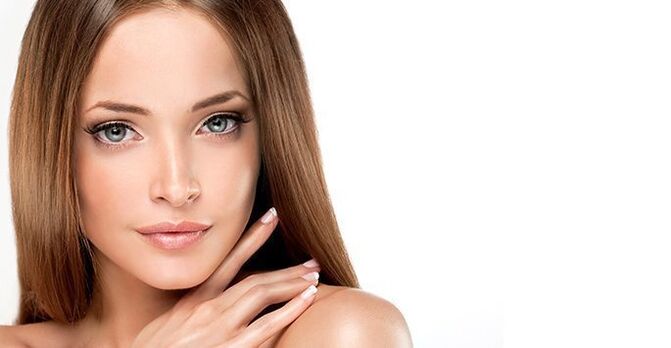
Instructions to perform
To globally solve the emerging problems of skin aging, people aged 16 to 65 can use the laser resurfacing procedure. Of course, which effect is more suitable, you need to decide individually. You can use the laser resurfacing procedure if you need to perform:
- correction of age-related defects of the epidermis in cases where surgical correction is impossible;
- smooth the skin around the eyes (removal of "crow's feet");
- rejuvenation and tightening of the skin on the face (forehead, cheeks, chin, area around the mouth), as well as on the décolletage, neck, hands;
- scar removal after acne;
- treatment of pigmented areas, including melasma;
- removal of enlarged pores, spider veins;
- correction of the inner surface of the arms and thighs;
- removal of stretch marks on the abdomen, buttocks and other parts of the body;
- treatment of scars after surgical interventions and injuries.
To select a suitable technique and treatment, you should consult a doctor.
Contraindications
Fractional laser exposure is a serious procedure, and before deciding on it, you should carefully weigh the pros and cons. Even at the initial stage, the doctor who will carry out the rejuvenation procedure must carefully examine and interview the future patient to identify the presence or absence of contraindications. These include:
- the presence of inflammatory processes in the affected area (including acne in the acute stage);
- herpes;
- oncological diseases;
- diabetes;
- blood diseases (clotting disorders);
- infectious diseases in the acute period;
- skin infections;
- allergic reactions;
- epilepsy;
- immunodeficiency;
- hypertension or hypotension;
- age up to 16 years (the not yet formed epidermis can be easily damaged);
- age after 65 years - in this case, due to a decrease in the intensity of regeneration processes, the rehabilitation period will be long;
- pregnancy and lactation.
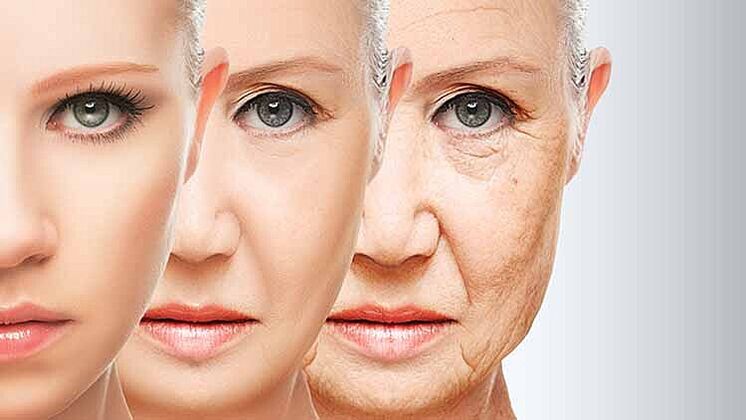
The course of the procedure
As a rule, prior preparation for the laser resurfacing procedure is not required, therefore, after an initial consultation with a specialist and in the absence of contraindications, you can start immediately. This procedure is performed on an outpatient basis, and upon completion, the patient is sent home.
- Even at the examination stage, the doctor determines the area and depth of the necessary impact, the length of the laser beam and the size of the laser grid.
- Make-up is removed from the skin.
- Approximately one hour before the start of the procedure, the doctor will anesthetize the treated area with an anesthetic cream.
- After the anesthesia begins to act, the doctor proceeds directly to work with the laser. Depending on the intervention, as well as the type of apparatus, the actions of a specialist may differ. For example, when polishing the skin, the doctor draws continuous lines on the skin with a nozzle, without stopping, so that, while correcting the necessary area, the layer is not burned too much. During DOT resurfacing, the nozzle is sequentially rearranged over selected areas, applying laser grids to them. In both cases, a tingling sensation or even a slight burning sensation is possible.
Modern beauty salons offer a wide range of restoration and rejuvenation procedures based on laser exposure. However, most methods are quite serious intervention and require certain knowledge and skills. But devices with the help of which ablative laser procedures are carried out at home without special training have appeared.
rehabilitation period
It will take at least 1-2 weeks to restore the integrity of the skin, during which the treated areas require special care. Immediately after laser exposure, pain, burning, and swelling of the skin may occur. The next day these symptoms will intensify, ichor may appear on the treated skin and scabs may form, which should not be touched or attempted to be removed under any circumstances. They serve as a kind of protective barrier between infection from the environment and regenerating skin. At this stage, a cream with an analgesic and anti-inflammatory effect is used to reduce pain symptoms. To reduce the intensity of edema, it is worth reducing fluid and salt intake. By the end of the first week, the crusts soften and gradually disappear, under them a thin pink layer of the renewed epidermis is hidden.
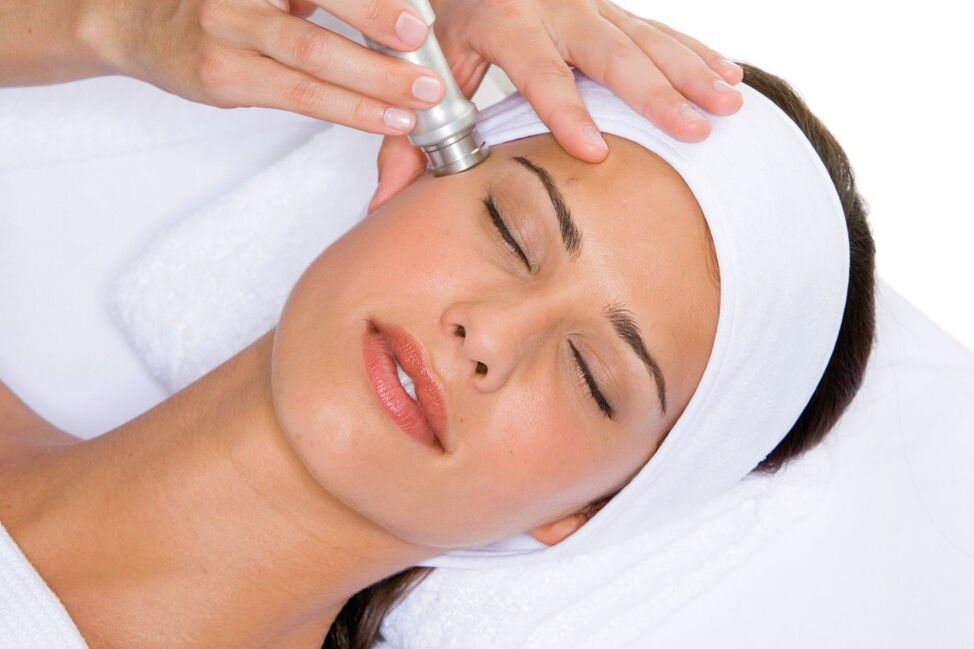
Care after fractional rejuvenation
For a speedy recovery, special skin care is needed.
- Do not use tap water for washing. It is better to use bottled or boiled water.
- During the first week, avoid skin contact with sunlight. And then, for a month (until the skin's natural color returns), use products with UV protection of at least 30.
- Within a month (until the epidermis is fully restored), scrubs, peels and other products that can damage the skin should not be used.
- If there is no allergy, take special vitamin complexes aimed at improving the skin, they will help speed up the recovery process.
Possible complications
In addition to the processes described that are typical of the rehabilitation period, skin recovery after laser exposure can be complicated by the following processes:
- the patient may experience itching in the treated areas;
- after the crusts come off, the red spots on the skin can remain for a long time;
- possible activation of the herpes virus.
Approximately 4% of those who have had this procedure have scarring, rosacea (spider veins), or areas of hyperpigmentation.
Frequency of procedures
Speaking about how many procedures will be needed and how often to repeat the course, you need to focus on a particular patient. Indicators are determined by the doctor, depending on the condition of the patient's skin.But, as a rule, ablative techniques, as well as laser peeling or biorevitalization, include a course of 3-6 procedures.To achieve a lasting effect that will last for several years, it may be necessary to repeat the course in six months.
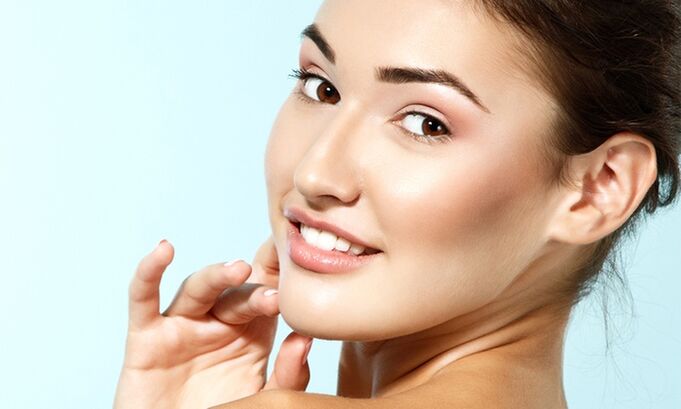
Customer Reviews
- "The procedure itself was really painful. But it's also my fault: I refused the anesthetic cream, trying to save money. However, this pain was quite bearable. After the procedure, the whole face turned red like after a burn. The redness disappeared the next day. They told me that you can use foundation, but I decided not to burden the skin again. On the second day after the procedure, the skin began to peel off and scabs formed. I noticed a positive result on the third day: the old skin began to peel off, the crusts fell off, and the new skin really became like "new": there were no scars (already after the first procedure, although they told me about 3), fine wrinkles were smoothed, pores were narrowed, the complexion improved, the oval tightened, so despite the pain, cost and some inconveniences of the procedure, I was very satisfied with it and now I recommend it to everyone.
- "Very exaggerated! There is a result, but what they write in the advertisement has to be divided by five. My result: the skin is more elastic, the complexion is fresh, the pores have become smaller, the fine mesh has been eliminated , the superficial wrinkles on the forehead have diminished a little, the age spots (banal freckles after the summer) have become a little lighter and a little less in diameter. If you know what to expect, you will be satisfied, you cannot blindly trust advertising.
- "I proposed to the doctor to get rid of age-related wrinkles on the upper lip, the so-called folds - nasolabial folds, and in general, to improve the structure of the skin. A special anesthetic cream was applied to my face, followed by of a colorless lubricant. Fraxel treated the area of the cheeks, chin, nasolabial folds and forehead. During the procedure, an icy breeze blew in the area where Fraxel was currently working. And so it did not hurt. General impressions of the procedure : more effective than various masks and poultices, in conjunction with a healthy lifestyle. "
Cosmetology today offers a huge selection of procedures that can restore the health and youth of the skin. Methods developed on the basis of laser exposure occupy one of the first places in terms of efficiency in this list. Popularity is also brought by devices that are used at home, although for a radical solution to the problem that has arisen, it is better to turn to professionals. However, in order not to be disappointed later as a result, you need to responsibly approach the choice of both the clinic where the procedure will be performed, and the doctor who will carry it out. In addition, it is necessary to carefully follow the recommendations that the doctor will give after laser resurfacing. And so the renewed, smooth and radiant skin will be a natural result.























.jpg)